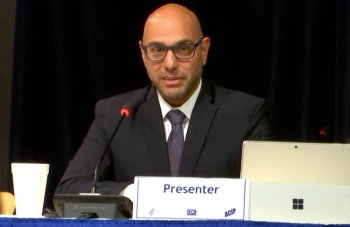
- Medical Economics November-December 2024
- Volume 101
- Issue 10
Preventing malpractice lawsuits: The AVOID strategy
Key Takeaways
- A positive attitude and effective bedside manner foster open communication, reducing misunderstandings and potentially deterring legal action.
- Valuing the patient's perspective enhances satisfaction, reducing the motivation to file lawsuits even if complications arise.
To proactively reduce the likelihood of a lawsuit, physicians can adopt a strategic approach embodied in the acronym A-V-O-I-D.
In today’s litigious society, even the most skilled and conscientious physicians face the risk of malpractice claims at some point in their careers. While obtaining comprehensive malpractice insurance coverage is critical, it is not the only line of defense. To proactively reduce the likelihood of a lawsuit, physicians can adopt a strategic approach embodied in the acronym AVOID, originally developed by Laura Fortner, MD, an OB/GYN and medical malpractice coach. This article unpacks each component of the AVOID framework, providing essential insights for health care providers seeking to safeguard their practice and enhance patient care.
A: Attitude bedside manner
Attitude, often referred to as bedside manner, is fundamental in shaping a patient’s experience and perception of care. An effective bedside manner fosters open communication, reduces the likelihood of misunderstandings and contributes to better clinical outcomes. Physicians should strive to connect with patients through direct eye contact, addressing them by name and engaging in active listening. Nonverbal cues, such as maintaining an open posture and avoiding defensive gestures (e.g., crossed arms or frequent clock-checking), play a crucial role in conveying empathy and attentiveness.
A strong patient-physician relationship, underpinned by a positive attitude and demeanor, can significantly influence the patient’s decision-making process following an adverse event, potentially deterring legal action even in cases where negligence is perceived.
V: Value the patient’s perspective
Patients who feel heard and respected are less likely to pursue legal action. When patients perceive their provider as compassionate and invested in their well-being, they are more likely to communicate openly, share important information and feel satisfied with their care. This satisfaction, in turn, can reduce the motivation to file a lawsuit, even if complications arise.
O: Operate in systems
Efficient systems and processes are vital for minimizing errors and ensuring consistency in patient care.An organized practice, with streamlined workflows and clear communication, enhances the quality of care and projects professionalism and competence to patients. Disorganization or chaotic environments can lead to mistakes and diminish patient confidence, increasing the likelihood of malpractice claims.
I: Initiate self-care
Physician burnout is a significant risk factor for medical errors and malpractice claims. Self-care is vital for the physician’s own health and also for the safety and well-being of patients. A well-rested, balanced physician is more likely to provide attentive, high-quality care and make sound clinical decisions. Physicians should strive to fi nd a sustainable work-life balance, recognizing that their ability to care for patients depends on their own physical and mental health.
D: Document, document, document
Thorough documentation is the foundation of a strong legal defense in the event of a malpractice claim. Medical records should be detailed, accurate and completed promptly. Physicians should document their clinical reasoning, the facts of the case and the rationale for their decisions, ensuring that the medical record reflects a clear and comprehensive account of the patient’s care.
Avoid relying solely on electronic health record templates, as these can lead to omissions or inconsistencies. Instead, personalize entries to capture the unique aspects of each case. It is essential to record factual, objective information, including follow-up care plans and patient interactions.
The AVOID strategy provides a practical, comprehensive approach to reducing the risk of malpractice lawsuits.
Jennifer Wiggins is CEO and founder of Aegis Malpractice Solutions.
Articles in this issue
12 months ago
Opting out of Medicare12 months ago
This is a wake-up call for physician-owned practices12 months ago
Highlights from the 2024 Concierge Medicine Forum12 months ago
The care deficit: We need more men in health care12 months ago
'The cuts need to stop'about 1 year ago
Cancer screenings: The vital role of the primary care physicianNewsletter
Stay informed and empowered with Medical Economics enewsletter, delivering expert insights, financial strategies, practice management tips and technology trends — tailored for today’s physicians.















